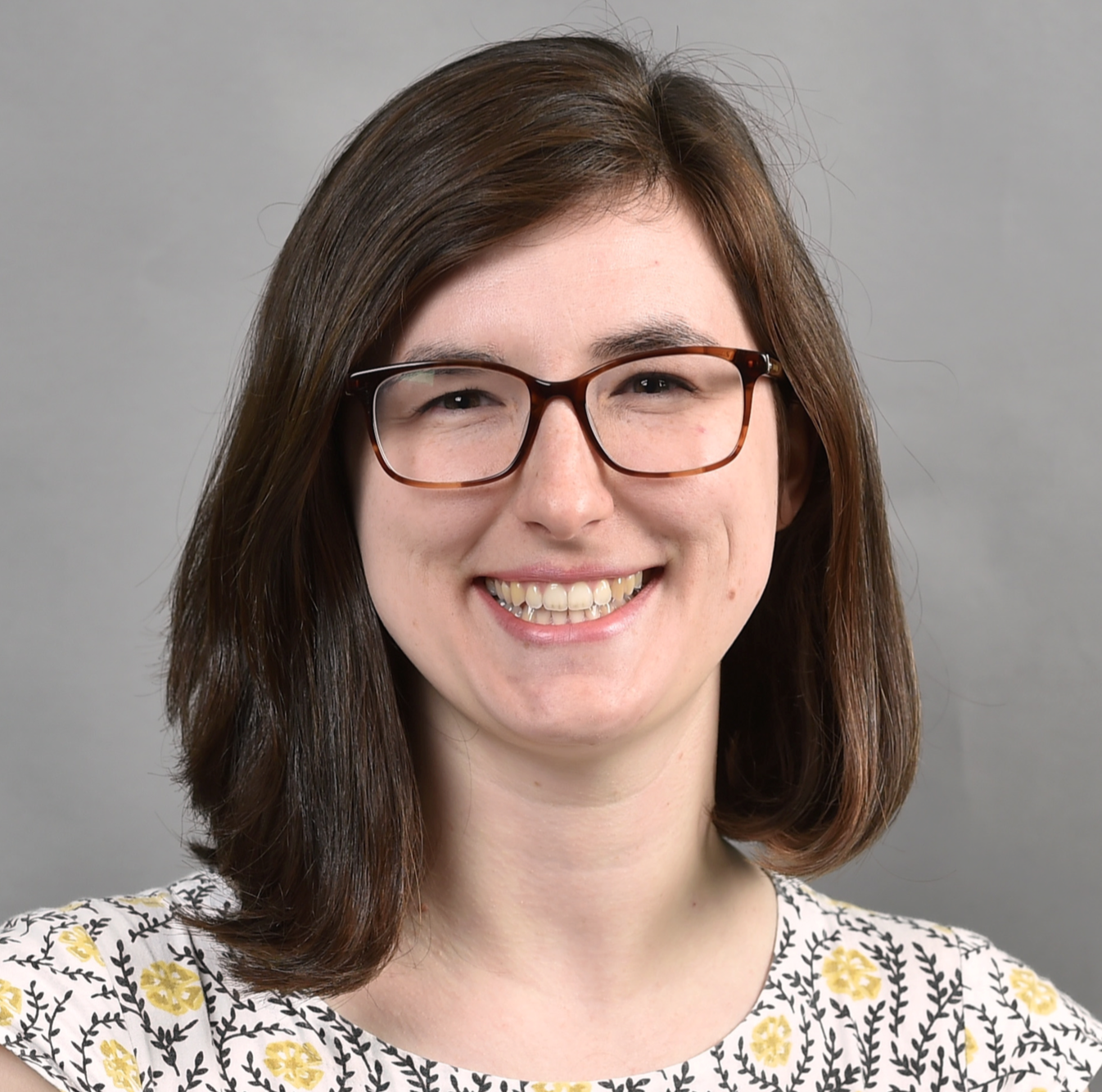Mandy Hofmockel is deputy editor of news for Newsday.com and a graduate of Poynter’s Leadership Academy for Women in Digital Media and Local News Innovation Table Stakes program. As the writer of a popular journalism jobs newsletter, she also monitors opportunity in the media industry.
Hunting for journalism jobs can be anxiety-inducing, soul-crushing work — especially if you’re trying to break into a new space. Thankfully there’s a whole network of women willing to share what they’ve learned as they step into leadership positions across the industry.
Eight years ago, I embarked on a job hunt where I applied to more than 100 openings at dozens of organizations across the United States After five months of intense searching, I landed just three in-person interviews. Luckily, two of those led to job offers.
I’ll be forever grateful to those at my first job who saw something in me and decided to take a chance. That position helped me land another one, where I’ve since been promoted multiple times and now hold a senior digital leadership role.
I was not especially kind to myself during that first search. My self-esteem tanked. I withdrew from or bungled a lot of social situations because I was embarrassed I couldn’t find work. And I spent an unhealthy amount of time on my parents’ couch refreshing job sites.
Rebuilding my confidence after that took a long time, but I was incredibly fortunate to have a network of supportive family and friends to help me get there.
I wanted to give back to those working through some of the same issues so I started a free newsletter in early 2018, now called Journalism jobs and a photo of my dog. Each week I curate a list of recent openings organized by region, share industry readings and trainings, and include uplifting messages that have fueled me.
Plus I include a photo of my dog, Maggie, because she always makes me smile.
For nearly two years, I’ve tracked journalism openings across several job boards, social media and pitches that land in my inbox. The most exciting digital media roles I’ve seen generally fall into three categories: storytelling and content creation; audience growth and digital strategy; and product, engineering or project management.
If you’re looking to break into one of these spaces, here are some tips from seven digital women leaders on how they landed their roles:
This article originally appeared in an issue of The Cohort, Poynter’s newsletter for women kicking ass in digital media. Join the conversation here.
In Product
Use an outside perspective to grow at work
Leanne Gemma, now director of product at McClatchy, said she kind of stumbled into her first job at the company. She didn’t come from a journalism background and was looking for another role after working at a startup when she saw an interesting scrum master position at McClatchy in Raleigh.
McClatchy kept evolving and changing over the next several years, and Gemma took on new and different roles, using her outside perspective and strong product and development background to help her along the way.
Her current team of 15 includes people from journalism and product and/or technology backgrounds.
“If you want to move into product and that’s not your job, start figuring out how to do product things in your job,” Gemma said. “Figure out how to infuse product thinking into what you’re doing. It’s a lot easier to get into a job if you show you have the mindset and skill set and passion for it than if you’re just sitting back and waiting for it to come your way.”
Envision it, then build it
After co-leading the Guardian Mobile Innovation Lab, Sarah Schmalbach joined the nonprofit Lenfest Institute for Journalism as an entrepreneur in residence.
Months later, she had a clear sense of what she could offer the institute and pitched the board the idea for the Lenfest Local Lab, including what the team would look like, accomplish and cost.
As product director of the lab, Schmalbach set out to build a team that within the course of a year would run six to eight product experiments. For example, they worked on Philly Eats, which Schmalbach writes is “a local restaurant app that puts hundreds of professional reviews right at your fingertips.”
“I didn’t necessarily want to get back into a traditional product development role in a newsroom because I got really used to quick development cycles,” she said. “I like trying lots of new ideas and seeing what sticks.”
In Digital Strategy and Content
Pitch a position to your bosses
Laura Kim, senior digital strategy editor at The New York Times, joined The Weekly, the Times’ streaming documentary series after working on the Times’s digital transition team.
She saw a need for someone to work on the digital storytelling of the show through the organization’s platforms, so she wrote a memo to pitch her role to her bosses.
“I came into the Times first observing and (working to) really understand what the whole culture was all about,” she said. Once she “understood the system, I was able to work my way into this role.”
“With the show’s story team, we examined how to bring the Times, Left/Right (our production company), FX and Hulu under one umbrella,” Kim wrote in an email. “We were starting completely from scratch, so it felt very much like a startup at first. I’m proud to say that our systems have evolved immensely over the past year, and we’re still growing.”
Consider continuing education to build your skill set
Laurén Abdel-Razzaq, digital director of The Detroit News, heads up the team responsible for handling the News’ digital experience across platforms, including on its website and mobile products.
She started at the News about seven years ago, first working as a reporter, then as the social media manager. Abdel-Razzaq decided to get her MBA (while working full time) in the hopes that she’d be in a better position for a management role if opportunities presented themselves.
Before graduation, her boss took another job — so Abdel-Razzaq applied for the opening.
“I was fortunate in that I had people in the newsroom — allies and mentors who were advocating for me and who believed in me and told me that even though I was relatively new at this (and) relatively young, that they would be there to support me and help me through difficult situations,” she said.
Though Abdel-Razzaq doesn’t think that you have to go back to school for a leadership or management role, she said it could be very useful to find classes or seminars to learn new skills or get new ideas.
“If you’re trying to go into management, talk to the people who are already doing these jobs (and) meet them,” she said. “Figure out how they do their jobs and try to find mentors and allies in your newsroom.”
In Audience Growth
Keep learning to stay connected
Ethar El-Katatney was recently hired as The Wall Street Journal’s young audiences editor after years at AJ+ where she most recently worked as senior executive producer with about 20 direct reports.
El-Katatney fit into her new role because she said the Journal was looking for someone who was excited about starting new projects and she had the skills they needed after years of building new teams and telling stories in new formats.
“I was good at giving advice and helping people really shape their pitches (and) shape their story ideas and not take over,” she said.
Her interest in continuous training and learning has helped El-Katatney keep her technical skills current so she’s never so far removed from content production that she can’t help her reports. She also recommends actively working to improve leadership skills.
“I ask my team every year to review me,” El-Katatney said. “They told me I should not eat lunch at my desk every day because then they never go to lunch.”
Prove yourself when it counts
When Everdeen Mason’s mentor went on maternity leave from The Washington Post, Mason had an opportunity to step in and launch a team in her absence. Mason finished up hiring and setting workflows before returning the team to her mentor when she came back from leave.
“That was sort of my test,” said Mason, who had pitched a number of different teams she could run. “Two months later they (said), ‘Give us a proposal for what you would do with this team that already exists.’”
Mason is now the senior audience editor at The Post, overseeing five embedded audience editors who also conduct editorial experiments.
“A lot of audience people are in this role where it’s not just that we have to execute something for the newsroom, but we also are agents of change, not just in structure and workflow, but agents of cultural change,” Mason said. “You can only go so far by yourself.”
She proved her mettle in a big newsroom — where she said she’s in a newer field, younger than a lot of her coworkers and presents differently by having dyed hair, piercings and some visible tattoos — by having “very tangible analytical and data skills” and a reporting background.
Find mentors who share your interests
If you had asked JulieAnn McKellogg what she wanted to be when she started her career in journalism, she would have said a foreign correspondent.
Now several years later, she’s the director of audience growth at Project Text, a platform that allows hosts, including journalists, to connect with their audiences via SMS.
Over time, she says, her interests slowly pivoted to working on tools that help local journalists build sustainable communities and business models. As she explored where she wanted to go with her career, it helped to work with leaders whose interests were aligned with hers.
“The top thing for me and my path has been the mentors and the people that I’ve found in the newsrooms I’ve worked with and around the industry,” she said. “They’ve really given me so many opportunities to propel myself forward and to take on new challenges.”
Thanks to Leanne, Sarah, Laura, Laurén, Ethar, Everdeen and JulieAnn for opening up and sharing their experiences and advice.
If I could go back eight years and talk to myself, I’d say it’s all going to be OK (eventually). I’d say keep an open mind when applying to different news organizations, focusing more on the skills I’d learn than the titles or outlets I’d work for.
I’d say it’s OK to introduce myself at a conference and tell people I’m looking for my next exciting opportunity instead of sputtering over not having work right now.
And I’d say be kind to yourself and don’t be afraid to ask for more help. It’s hard when you’re going through a rocky moment to look back at everything you’ve accomplished and look forward to everything you’ve yet to do.
Sometimes you just need a Cohort to help you out.
If you’re looking for extra help finding journalism jobs, here are a few resources I created to get you started, help you stay organized and feel inspired while you search.
- A roundup of dozens of websites, social media searches and newsletters with links to recent openings: http://bit.ly/journalismsites
- A spreadsheet that can be replicated so you can track all your applications over time: http://bit.ly/trackingjobs
- A slide deck where I surveyed six young journalists on how they got their starts: http://bit.ly/journalism-advice
For additional insights, inside jokes and ongoing conversations about women in digital media, sign up to receive The Cohort in your inbox every other Tuesday.







